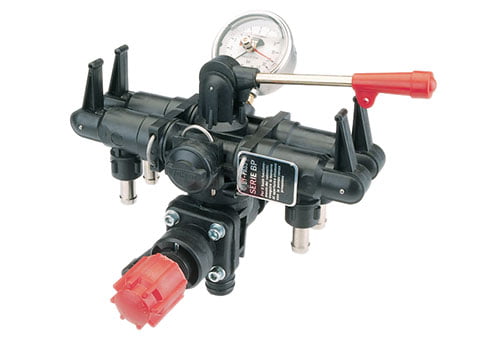Critical Aspects to Take Into Consideration When Selecting Control Valves
Critical Aspects to Take Into Consideration When Selecting Control Valves
Blog Article

Maximize Power Cost Savings and Convenience With Advanced Structure Automation Controls
In the world of modern-day architecture and facility monitoring, the integration of advanced structure automation regulates stands as a critical improvement. By utilizing the power of automation, structures can adjust, respond, and advance in methods that were when unbelievable.
Power Effectiveness Conveniences
Power effectiveness benefits can substantially decrease power usage and operational prices in buildings. Energy-efficient systems, such as sophisticated building automation controls, can enhance the usage of sources like air conditioning, home heating, and lighting, leading to lower power costs over time.
Moreover, improved energy performance can extend the lifespan of building devices and systems. By operating extra successfully, cooling and heating systems, light, and various other building parts experience less deterioration, resulting in decreased maintenance and substitute expenses. Furthermore, energy-efficient structures usually regulate greater building values and rental prices, supplying lasting monetary benefits to proprietors.
Furthermore, energy effectiveness can improve occupant convenience and performance. Appropriately controlled indoor settings with optimal lights and thermal conditions produce a more enjoyable and helpful work area, resulting in enhanced worker contentment and efficiency. Overall, the energy effectiveness benefits connected with innovative building automation controls are diverse, including expense financial savings, ecological stewardship, and passenger wellness.
Improved Convenience Control
Enhancing comfort control in building environments calls for an advanced assimilation of sophisticated automation systems for ideal resident health. By making use of innovative structure automation controls, facilities can tailor the interior atmosphere to fulfill the certain requirements and preferences of residents. These systems make it possible for specific law of temperature level, lighting, and air flow, producing a comfy and productive atmosphere. Passenger contentment and productivity are very closely connected to thermal convenience, making it important to have systems in place that can adjust to altering problems in real-time.
Improved comfort control goes beyond basic temperature level adjustments. It includes features such as personalized settings, tenancy sensing units, and natural light utilization to create a responsive and dynamic atmosphere. By incorporating these advanced controls, structures can not only boost comfort but additionally enhance energy performance by optimizing system operations based on actual occupancy and use patterns. Ultimately, focusing on passenger comfort with advanced automation systems causes an extra enjoyable and healthier interior atmosphere.
Operational Efficiency Improvements

Additionally, the application of real-time tracking and analytics tools enables building operators to recognize power ineffectiveness and functional anomalies promptly. By constantly monitoring energy usage patterns and system performance metrics, adjustments can be made in real-time to enhance power intake and make certain peak functional effectiveness. control valves. Additionally, integrating need feedback approaches right into structure automation controls can further boost functional efficiency by dynamically changing energy usage based upon grid problems and prices signals
Indoor Climate Optimization
Efficient indoor environment optimization is an essential aspect of building automation controls, making certain passengers' comfort and well-being while making best use of power financial savings. By making use of innovative sensors and controls, constructing automation systems can continually adjust click this link and keep track of temperature level, humidity levels, air top quality, and ventilation to develop an ideal indoor setting. Maintaining constant and comfortable problems not just enhances resident complete satisfaction however additionally increases efficiency and overall health.
Interior environment optimization additionally plays a vital function in power efficiency. By fine-tuning heating, cooling, and ventilation systems based on real-time data and tenancy patterns, developing automation controls can substantially decrease power usage - control valves. Implementing methods such as demand-controlled ventilation and thermal zoning can assist lessen energy waste while ensuring that each area of the structure obtains the required conditioning.

Lasting Setting Production
Building automation regulates not just maximize interior environment problems for energy performance and passenger comfort however likewise lay the structure for producing a sustainable atmosphere through calculated administration of resources and systems. By integrating sophisticated building automation technologies, such as sensing units, actuators, and smart software, centers can change and monitor power use in real-time to lessen waste and decrease their carbon impact. These systems allow anticipating maintenance, identifying prospective concerns check it out prior to they escalate and optimizing equipment performance to improve longevity and effectiveness.
Furthermore, lasting setting production expands past energy management to incorporate water preservation, waste reduction, and interior air high quality renovation. Structure automation controls can regulate water use, discover leaks, and ensure appropriate garbage disposal practices, contributing to overall sustainability initiatives. Furthermore, by regulating and keeping track of ventilation and purification systems, these innovations enhance occupant health and wellness and productivity while lowering power intake related to heating and cooling procedures.
Conclusion
Finally, advanced structure automation regulates deal considerable benefits in regards to power cost savings, convenience control, functional performance, indoor climate optimization, and developing a lasting atmosphere. By executing these controls, buildings can attain ideal performance while minimizing energy usage and boosting passenger comfort. It appears that making use of innovative automation modern technology is crucial in boosting building efficiency and creating a more lasting future.
Energy efficiency benefits can dramatically lower power usage and operational prices in structures. On the whole, the power efficiency advantages linked with sophisticated building automation controls are diverse, incorporating cost financial savings, environmental stewardship, and resident health.
Furthermore, including demand reaction methods into building automation controls can additionally enhance operational effectiveness by dynamically changing energy use based on grid conditions and rates signals.
Building automation regulates not only enhance interior environment problems for power performance and occupant convenience but also lay the structure for developing a sustainable her explanation setting via tactical management of sources and systems.In verdict, progressed building automation controls deal significant advantages in terms of power financial savings, convenience control, functional effectiveness, indoor environment optimization, and producing a lasting setting.
Report this page